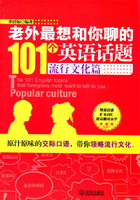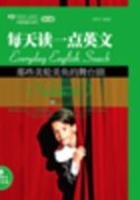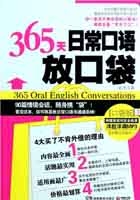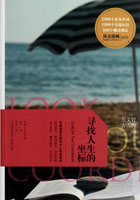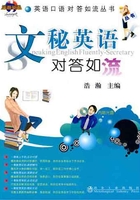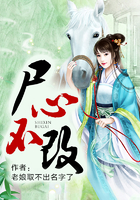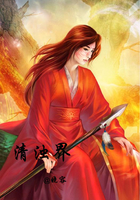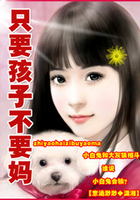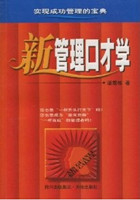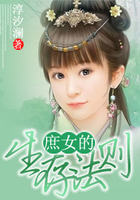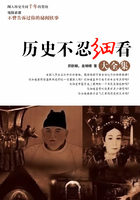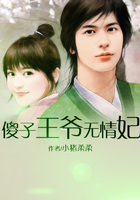On October 10th 1925, Chinese government arranged a grand ceremony in front of the Palace of Heavenly Purity to announce the inception of the Palace Museum。
1925年10月10日,中国政府在乾清宫门前举行了一场盛大的典礼,宣布故宫博物馆成立。
The Imperial palace was the grandest and the best preserved ancient architectural complex in our country。
故宫是我国现存最大,保存最完整的古建筑群。
Three harmonies are the Supreme Harmony, the Complete Harmony and the Preserving Harmony。
故宫三大殿——太和殿,中和殿,保和殿。
The Hall of Union lies between the Palace of Heavenly Purity and the Palace of Earthly Tranquility, with the meaning of combination of Heaven and Earth and happiness。
交泰殿在乾清宫和坤宁宫之间,含天地交合、安康美满之意。
Tian’anmen Square is just in front of the Imperial Palace。
天安门广场就在故宫的正门前。
It was built with blood and sweat of the labor people centuries ago。
故宫是几百年前劳动人民智能和血汗的结晶。
The Imperial Palace is the biggest national museum in our country。
故宫是我国最大的国家博物馆。
The Imperial Palace is composed of two parts—the Outer Court and the Inner Palace depending on the institution。
故宫按制度分外朝内廷两部分。
To the north of the Imperial Palace, the WanSui Mountain is the natural cover for defense。
紫禁城北有天然屏障万岁山。
The Hall of Complete Harmony is smaller among the three buildings and is surrounded by windows on all its sides。
中和殿在三个殿中算比较小的一个,四面都是窗户。
The west chamber of the Hall of Union served religious purposes and the east one was the bridal chamber where the newly married emperor and empress spent their first two nights after their wedding。
交泰殿的西面房间是为宗教活动设计的,东面是皇帝新婚的洞房,在那里新婚的皇帝和皇后度过他们新婚的头两晚。
The river is spanned by five bridges, which were supposed to be symbols of the five virtues preached by Confucius——benevolence, righteousness, rites, intelligence, and fidelity。
内金水河的上面有五座桥,孔子给每座桥都赋予了一个人性方面的美德,分别是仁、义、礼、智、信。
The Palace Museum has more than 9000 rooms in it。
故宫里有九千多间房间。
The Palace Museum is rectangular in shape, 961 meters long from north to south and 753 meters wide from east to west, covering a space of 720,000 square meters of which 150,000 is building area。
故宫整体结构呈长方形,南北相距961米,东西相距753米,总共占地72万平方米,建筑面积达15万平方米。
In Ming Dynasty, the Palace of Earthly Tranquility is the living place for empresses。
在明代,坤宁宫是皇后的寝宫。
The Palace Museum was build by Zhu Di, the fourth son of the founding emperor of Ming Dynasty Zhu Yuanzhang。
故宫是在明朝时朱棣,也就是朱元璋的第四个儿子下令建造的。
Shenwumen is a daily access gate。 Now this gate is the main entrance。
神武门是日常出入的门。现在是故宫的正门。
The Palace Museum is a striking testimony to Chinese civilization during Ming and Qing Dynasty。
故宫为明清时代中国文明的历史见证。
In 1988, the Forbidden City was listed by UNESCO as “World Cultural Heritage”。
1988年,故宫被联合国教科文组织列为“世界文化遗产”。
The Forbidden City is a good place where you can understand Chinese feudalism history well。
故宫能让你很好地读懂中国的封建历史。
Let’s Talk!
开始交流吧!
Tom: Wow, Look, What an inspiring scenery! What is this?
汤姆:哇,快看,好壮观啊,这些是什么啊?
Wang Xi: It is the world-famous Imperial Palace。
王希:这就是闻名全世界的故宫。
Tom: The reputation corresponds to reality 。What it is used for?
汤姆:真是名副其实啊,它是用来干吗的呢?
Wang Xi: The Imperial Palace was also called the Forbidden City。 It was the royal palace of the Ming and Qing Dynasties。
王希:这故宫还有个名字叫紫禁城,是明清两朝皇帝居住的地方啊。
Tom: It has a long history, right? But it seems that the Forbidden City is well-preserved。
汤姆:那它有很长的一段历史了啊,不过看起来紫禁城保存得很好。
Wang Xi: Yeah, it has a history of about 600 years。
王希:是啊,有六百多年了。
Tom: Can I have a visit for it?
汤姆:我可以去参观一下吗?
Wang Xi: Sure。 The Imperial Palace has been open to the public。 Thousands of people come and visit it everyday。
王希:当然可以,故宫已经是对社会公众开放了,每天都有好几千人来这参观呢。
Tom: It’s wonderful! I can’t wait to have a look。
汤姆:太好了,我迫不及待地要去看一看了。
Wang Xi: I promise you will never regret your choice。
王希:我保证你进去后肯定不会后悔这一行动。
Tom: Are you sure?
汤姆:真的吗?
Wang Xi: Of course! When you get into it, you will know the reasons。
王希:当然啦!等你进去就知道啦。
Tom: Got it。 I’ m going inside, would you come with me?
汤姆:懂了。我要去了,你愿意和我一起吗?
Wang Xi: My pleasure!
王希:非常愿意!
Beijing Opera
京剧
京剧是中国的国粹,是古代人民的经典创作。京剧的艺术理念,表演形态充分体现了中国传统文化的审美观,如中正端庄、典雅温和、善恶分明、空灵婉转。不论它被授予什么名号,京剧绝不逊色于世界其他经典,而且更具个性。想要了解中国的文化,京剧是必不可少的一部分。
Realize Beijing Opera
认识京剧
1京剧简介及背景
Peking opera or Beijing opera is a form of traditional Chinese theatre which combines music, vocal performance, mime, dance and acrobatics。 It arose in the late 18th century and became fully developed and recognized by the mid-19th century。 It was extremely popular in Qing Dynasty court and has come to be regarded as one of the cultural treasures of China。 Major performance troupes are based in Beijing and Tianjin in the north, and Shanghai in the south。 The art form is also preserved in Taiwan, where it is known as Guoju。 It has also spread to other countries such as the United States and Japan。
Although it is called Beijing Opera, its origins are not in Beijing but in provinces of Anhui and Hubei。 The early Qing Dynasty saw a great development of a plethora of operas。 In the middle of the Qing Dynasty, Hui and Han operas were brought into Beijing。 They became immensely popular with the imperial family, nobles, officials and the commoners。 The marriage of Hui and Han operas became known as the Beijing opera。
Peking opera features four main types of performers。 Performing troupes often have several of each variety, as well as numerous secondary and tertiary performers。 They utilize the skills of speech, song, dance, and combat in movements which are symbolic and suggestive, rather than realistic。 Above all, the skill of performers is evaluated according to the beauty of their movements。 Performers also adhere to a variety of stylistic conventions that help audiences navigate the plot of the production。 The layers of meaning within each movement must be expressed in time with music。 The music of Peking opera can be divided into the Xipi and Erhuang styles。 Melodies include arias, fixed-tune melodies, and percussion patterns。 The repertoire of Peking opera includes over 1,400 works, which are based on Chinese history, folklore, and, increasingly, contemporary life。

